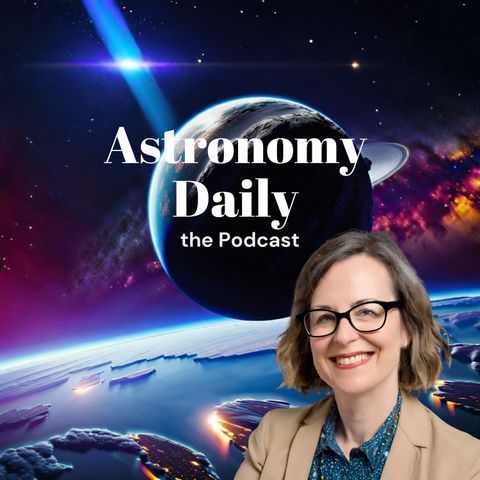S03E123: NEOWISE Ends, China's Satellite Mishap, and Meteor Mysteries

Scarica e ascolta ovunque
Scarica i tuoi episodi preferiti e goditi l'ascolto, ovunque tu sia! Iscriviti o accedi ora per ascoltare offline.
Descrizione
Welcome to Astronomy Daily, your go-to Podcast for the latest news and updates from the world of space and astronomy. I'm your host, Anna. Today, we have a stellar lineup...
mostra di più- NASA's NEOWISE Mission Ends: NASA’s NEOWISE mission has officially concluded after over a decade of invaluable service in detecting and studying asteroids and comets. Initially launched as the Wide-field Infrared Survey Explorer (WISE) in December 2009, the mission was repurposed to focus on identifying near-Earth objects, contributing significantly to planetary defense. Despite its end, NEOWISE has left a lasting legacy with its exhaustive datasets, paving the way for future missions like NASA’s Neo Surveyor.
- China's Satellite Launch and Space Debris: This past Tuesday saw the liftoff of a Chinese Long March 6A rocket, launching the first 18 satellites for China’s ambitious Qianfan broadband network. However, the upper stage of the rocket broke apart shortly after, dispersing a cloud of debris into space. This incident raises significant concerns about space sustainability, emphasizing the need for robust space domain awareness and mitigation practices.
- Persistent Meteor Trails: Recent studies have unveiled the mystery behind persistent meteor trails. Contrary to previous beliefs, the key to these lasting trails is the meteor’s altitude as it enters Earth’s atmosphere. At around 90 km up, a chemical reaction occurs between vaporized metals from the meteor and atmospheric oxygen and ozone, sustaining the trail for minutes or even up to an hour. These findings provide a unique window into the atmospheric chemistry at otherwise difficult-to-study altitudes.
- Debunking Kugelblitze: For decades, the concept of black holes created from concentrated light, known as Kugelblitze, has fascinated scientists. However, recent research has debunked this theory. Advanced mathematical models including quantum effects show that the light intensity required to form a Kugelblitz far exceeds anything observed in the universe. This discovery clarifies the limitations of our understanding of black holes and the conditions necessary for their formation.
- (00:00) Today's Astronomy Daily podcast features a stellar lineup of stories
- (00:35) NASA's NEOWISE mission has officially come to an end after 10 years
- (05:05) Persistent meteor trails are formed when metals from meteors react with ozone
- (08:24) New research challenges Kugelblitz theory that black holes formed from light
- (11:06) Thank m you for joining us on this journey through the latest in space and astronomy news
For more Astronomy Daily, including our continually updating newsfeed, visit our website at astronomydaily.io. Follow us on social media at AstroDailyPod on X, Facebook, YouTubeMusic, and TikTok. We love engaging with our community, so be sure to drop us a message or comment on your favorite platform.
For more Space and Astronomy News Podcasts, visit our HQ at www.bitesz.com.
Informazioni
| Autore | bitesz.com |
| Organizzazione | bitesz.com |
| Sito | www.bitesz.com |
| Tag |
Copyright 2024 - Spreaker Inc. an iHeartMedia Company
